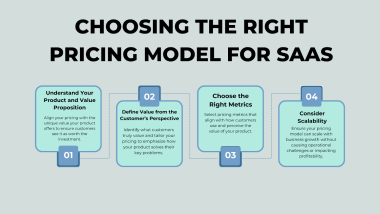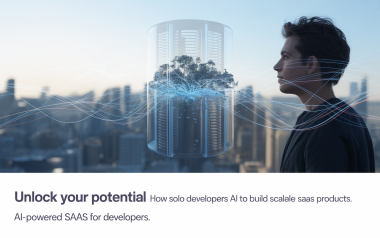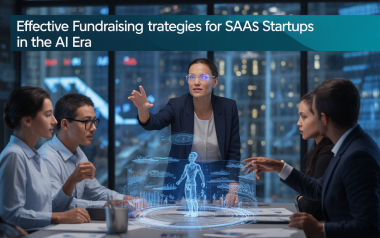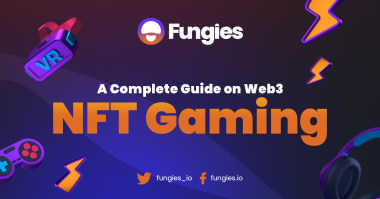In today’s competitive landscape, SaaS startups must navigate a more selective investment environment where AI capabilities have become a key differentiator for securing funding. The modern fundraising journey requires founders to demonstrate not just innovative products but also capital efficiency, clear market traction, and strategic implementation of AI technologies to attract increasingly discerning investors.
Key Takeaways
- Investors now prioritize capital efficiency and sustainable growth metrics over rapid expansion
- Effective fundraising requires starting the process 6-9 months before you need capital
- Leveraging AI capabilities for market analysis provides a competitive advantage in investor pitches
- Alternative funding routes like bootstrapping and crowdfunding offer viable options beyond traditional VC
- Demonstrating clear customer retention and revenue growth is essential in the current funding climate
Understanding the Current SaaS Fundraising Landscape
The SaaS fundraising environment has transformed dramatically in recent years, with AI advancements reshaping investor expectations. Venture capitalists and angel investors have become increasingly selective, focusing on startups that demonstrate not just innovation but sustainable business models.
This shift means founders must adapt their approaches to match the new reality. According to recent trends, investors are taking longer to make decisions and requiring more concrete evidence of market fit before committing funds.
Crafting a Compelling Investor Pitch
A successful fundraising pitch in today’s environment must highlight several critical elements to capture investor interest. I’ve identified the following components as essential for SaaS founders preparing their pitch decks:
- Demonstration of capital efficiency and responsible resource allocation
- Clear evidence of product-market fit with metrics to support claims
- A detailed go-to-market strategy with realistic customer acquisition costs
- Showcase of your team’s expertise and ability to execute the vision
- Integration of AI capabilities that provide sustainable competitive advantage
The most successful pitches balance ambition with realism. Investors appreciate founders who can articulate both their grand vision and the pragmatic steps to achieve it.
Leveraging AI for Market Analysis and Competitive Edge
AI has become more than just a buzzword—it’s now a critical component of successful SaaS fundraising strategies. Smart founders are using AI tools to enhance their market understanding and strengthen their investor presentations.
Here’s how AI can be effectively leveraged during your fundraising journey:
- Use AI tools to analyze market trends and identify untapped opportunities
- Apply predictive analytics to forecast customer behavior and market shifts
- Develop AI-driven competitive analysis to highlight your unique positioning
- Create data visualizations that make complex market dynamics easily understandable
This strategic use of AI demonstrates to investors that you’re not just building a product but developing market intelligence capabilities. This approach has proven particularly effective in securing higher valuations.
Navigating Common Fundraising Challenges
Even the most promising SaaS startups face significant hurdles during fundraising rounds. Understanding these challenges before starting your fundraising journey can help you prepare more effectively.
The most frequent obstacles include:
- Extended timelines – Fundraising cycles now often take 6-9 months rather than the 3-4 months common in previous years
- Higher bars for traction and revenue – Investors expect to see meaningful customer adoption
- Increased competition for limited capital – Standing out requires exceptional execution
- More detailed due diligence processes – Be prepared for thorough examination of your business
To overcome these challenges, start your fundraising process well before you need the capital. This proactive approach gives you time to address investor concerns and build relationships.
Exploring Alternative Funding Options
Traditional venture capital isn’t the only path for SaaS startups seeking funding. Many successful founders have leveraged alternative funding methods that offer different advantages depending on your specific situation and goals.
Consider these options as part of your fundraising strategy:
- Bootstrapping – Growing through customer revenue while maintaining complete control
- Revenue-based financing – Repaying investors through a percentage of monthly revenue
- Strategic partnerships – Securing funding through companies that benefit from your solution
- Crowdfunding – Raising capital while building community and validating market demand
- Government grants and incentives – Non-dilutive funding for innovative technologies
Each option comes with its own trade-offs between growth rate, control, and cost of capital. The best approach often combines multiple funding sources tailored to your specific growth stage.
Success Stories: Learning from Funded SaaS Startups
Examining successful SaaS fundraising stories reveals valuable patterns that current founders can apply. The most successful fundraisers share common traits in how they positioned their companies and approached investors.
Key success factors include:
- Demonstrating clear product differentiation in crowded markets
- Showing exceptional retention metrics that prove product stickiness
- Building relationships with investors long before formal pitching begins
- Leveraging customer testimonials and case studies to validate claims
These successful founders didn’t just secure funding—they secured the right funding from partners who added value beyond capital. This strategic approach to investor selection has proven as important as the fundraising process itself.
Preparing for Due Diligence
The due diligence process has become more rigorous as investors exercise greater caution in the current market. Preparing thoroughly for this scrutiny can make the difference between securing funding and facing rejection.
Create a comprehensive due diligence package that includes:
- Detailed financial projections with clear assumptions
- Customer acquisition and retention metrics with supporting data
- Technical documentation demonstrating your product’s scalability
- Legal documentation including IP protection and compliance measures
- Market analysis with competitive positioning clearly articulated
Having this information organized and accessible shows investors you run a transparent operation. This preparation significantly increases your chances of successfully completing the funding process.
Final Thoughts on SaaS Fundraising in the AI Era
The fundraising landscape for SaaS startups continues to evolve rapidly, with AI capabilities becoming increasingly central to investor decisions. Success requires adapting to these changing expectations while maintaining focus on the fundamental business metrics that drive valuation.
Remember that fundraising is ultimately about building relationships and demonstrating your ability to execute on your vision. The most successful founders view it as an ongoing process rather than a one-time event.
Sources
ecaplabs.com – SaaS Funding
forumvc.com – Key Trends and Fundraising Advice for B2B SaaS Founders in 2025






